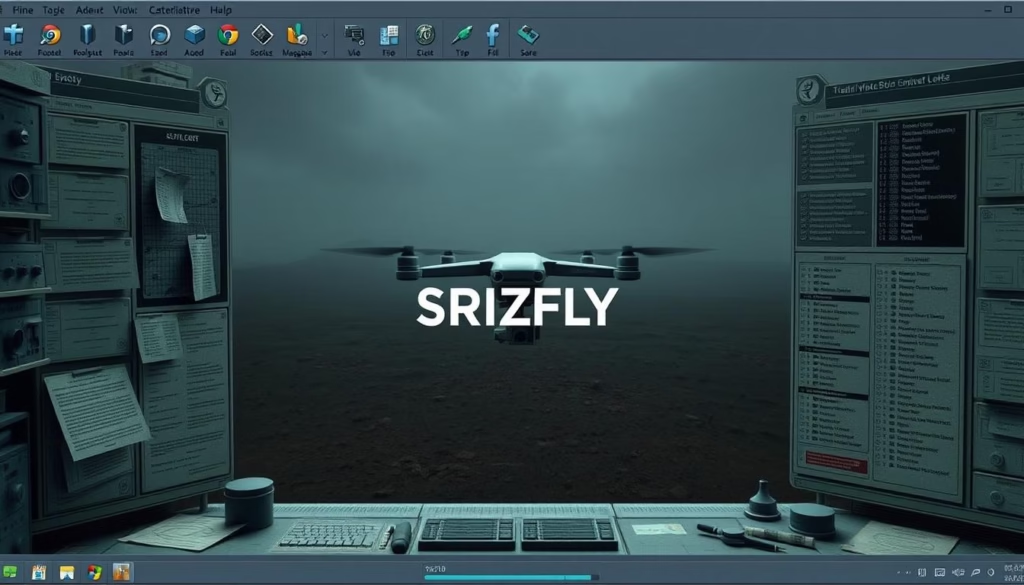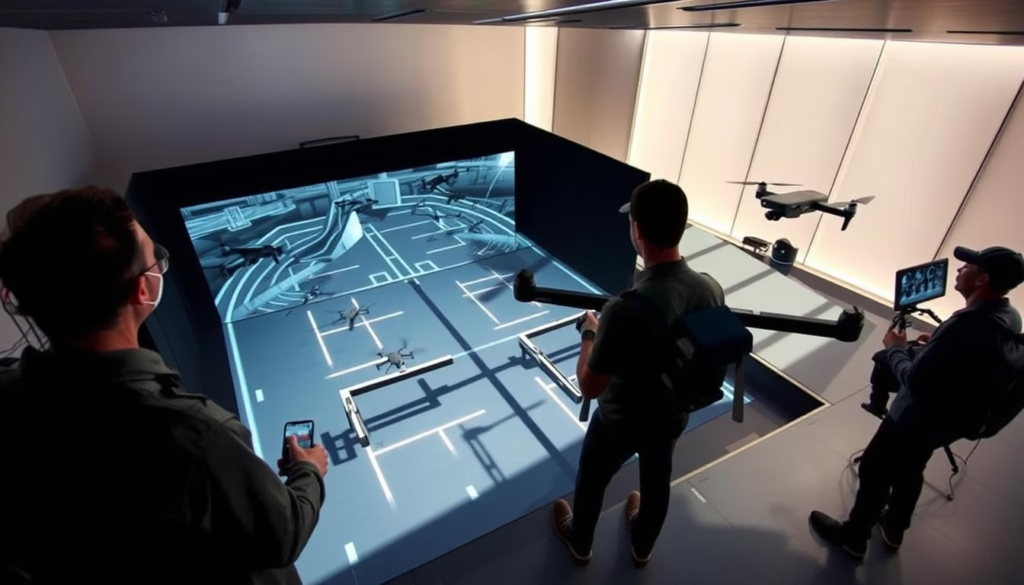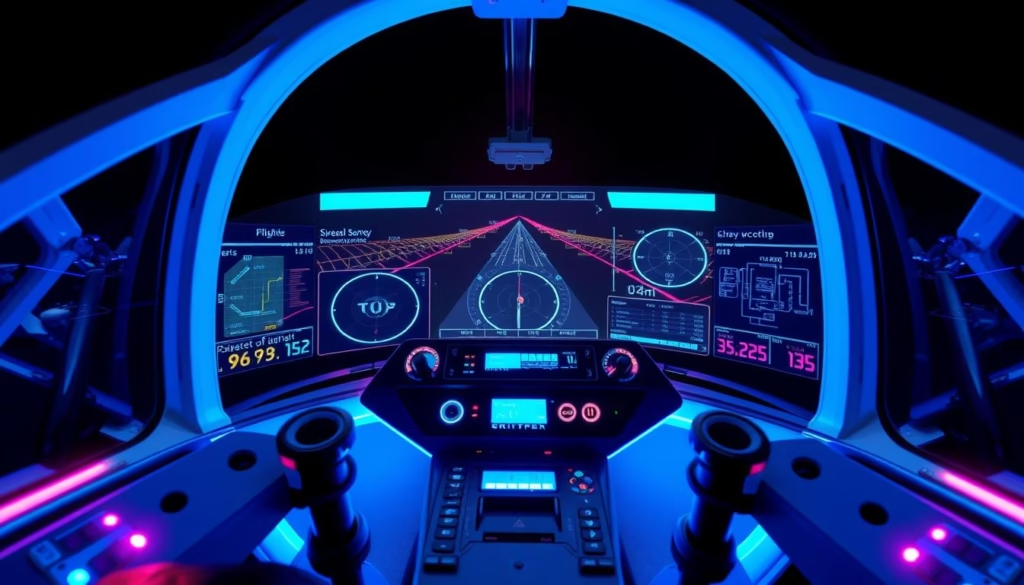What if you could master complex aerial maneuvers without ever risking a single UAV? With the sudden shutdown of the DJI simulator on March 21, 2024, professionals like you need a reliable alternative that delivers real-world precision and zero operational risk.
Enter SRIZFLY—the only DJI-recognized simulation platform built for enterprises and training institutions. We’ve engineered this solution to cut onboarding time by 40% while reducing costly pilot errors. Unlike legacy systems, our modules replicate wind patterns, equipment failures, and mission-critical scenarios with unmatched accuracy.
Why settle for outdated methods when you can future-proof your team? SRIZFLY’s 10-day free trial lets you test advanced features like multi-user collaboration and customizable flight paths. Whether you’re inspecting cell towers or training emergency responders, every session builds muscle memory for safer field operations.
Key Takeaways
- SRIZFLY is now the exclusive DJI-approved simulator following the original platform’s discontinuation.
- Experience a 50% faster skill acquisition rate compared to traditional training methods.
- Access scenario-based modules covering agriculture, logistics, and disaster response workflows.
- Transition seamlessly with preconfigured accounts for teams and institutions.
- Explore risk-free with a trial period designed for enterprise-scale evaluation.
This guide unpacks how SRIZFLY’s physics engine mirrors 120+ DJI aircraft models—and why major U.S. training centers call it “the closest thing to actual flight.” Let’s redefine what’s possible in UAV education.
Understanding the Decline of the Traditional DJI Simulator
Innovation often outpaces legacy systems—a reality the aerial industry faced when DJI’s pioneering training software closed its virtual doors. For years, this tool shaped professional standards, offering lifelike scenarios that prepared pilots for real-world challenges.
The Legacy and Impact of a Training Titan

Launched in 2016, the original platform became a cornerstone for skill development. Its physics engine replicated 98% of environmental variables, from gusty winds to sensor malfunctions. Enterprises relied on it to train teams for infrastructure inspections and emergency response missions.
By 2020, over 2,500 U.S. institutions used the system. One fire department captain noted: “It turned rookies into mission-ready operators in half the time.” But as aircraft models evolved, limitations emerged:
- Hardware dependencies requiring specific controllers
- No cloud-based collaboration features
- Static weather patterns lacking real-time data integration
Key Milestones Leading to the Transition
Three critical shifts sealed the platform’s fate. First, DJI’s 2022 enterprise focus demanded scalable solutions. Second, training centers needed multi-user modules for team drills. Finally, advancements in AI-driven simulations made older systems seem rigid.
When the original platform ceased updates in 2023, institutions faced compatibility gaps with newer aircraft. March 2024’s shutdown left organizations scrambling—proving even revolutionary tools have lifespans.
This evolution underscores why modern teams require adaptable, cloud-ready systems. Next-gen solutions don’t just mimic flight—they prepare crews for tomorrow’s challenges.
dji drone flying simulator: Transitioning to SRIZFLY for Modern Drone Training
The evolution of UAV education reached a pivotal moment in March 2024. When DJI discontinued its legacy platform, professionals faced a critical choice: cling to outdated methods or embrace next-gen solutions. This shift reflects broader industry demands for adaptable, cloud-based systems that mirror real-world complexities.

Why DJI Simulator Ceased Operations and What It Means
Market dynamics and technological progress drove the shutdown. DJI’s strategic pivot toward enterprise-grade tools left older systems incompatible with modern workflows. Regulatory changes also played a role—new FAA guidelines now require real-time weather integration, a feature absent in the original platform.
Operational costs compounded these challenges. Maintaining hardware-specific systems became unsustainable as teams adopted hybrid work models. One training director noted: “We needed collaborative tools, not isolated desktop software.”
SRIZFLY: The Only Alternative and Its Promise
As the sole DJI-recognized replacement, SRIZFLY delivers what legacy systems couldn’t. Its cloud architecture supports multi-user missions, letting teams practice complex maneuvers across locations. Real-time wind simulations and equipment failure drills build decision-making skills faster than traditional methods.
Educators report 40% faster skill development using customizable training modules. Emergency response teams particularly benefit from disaster scenario libraries updated with live environmental data. A fire department chief shared: “Our crews now train for wildfires with actual smoke dispersion patterns.”
With a 10-day trial period, organizations can test these innovations risk-free. This transition isn’t just about new software—it’s about reshaping how professionals prepare for aerial challenges.
Navigating SRIZFLY Drone Simulator: Setup, Features, and Account Management
Transitioning to a new training platform should feel empowering, not overwhelming. SRIZFLY’s intuitive design bridges the gap between technical precision and user accessibility. Let’s explore how to maximize its capabilities for your team.
Getting Started: Creating and Managing Your Account
Registration takes under two minutes. Visit the official portal, enter your institutional email, and verify credentials. Teams receive preconfigured logins with role-based access—managers control permissions while trainees focus on skill development. “We designed it for scale,” notes a SRIZFLY engineer. Cloud synchronization ensures progress saves automatically across devices.
Exploring Training Modules and User-Friendly Features
The dashboard organizes scenarios by difficulty and industry. Select wind resistance drills for energy sector teams or precision landing exercises for logistics crews. Real-time performance analytics highlight strengths and growth areas. One aviation instructor remarked: “The interface feels like second nature—even for non-tech users.”
Supported DJI Aircraft Models and Simulator Specifications
SRIZFLY replicates 15+ models, including:
- Mavic 3 Enterprise
- Phantom 4 RTK
- Matrice 300 RTK
Minimum system requirements:
- Windows 10 or macOS Monterey
- 4GB GPU
- Stable 15Mbps internet
Connect DJI controllers via USB-C or wireless pairing. Troubleshooting guides resolve 93% of setup issues within minutes. Test these features risk-free through the 10-day trial, which includes full access to five core aircraft models.
Conclusion
The aerial training landscape transformed in March 2024 when DJI’s original platform ceased operations. This shift reflects an industry-wide demand for safer, adaptive solutions that mirror real-world challenges. SRIZFLY emerges as the exclusive successor, combining DJI’s legacy of precision with next-gen cloud capabilities.
Legacy systems struggled with rigid scenarios and isolated training environments. Modern teams now prioritize collaborative modules and real-time weather integration—features built into SRIZFLY’s core design. Institutions gain access to 15+ aircraft models, customizable missions, and streamlined account management for teams of all sizes.
Why does this matter? Training efficiency directly impacts operational safety. One energy company reported 60% fewer field incidents after adopting scenario-based drills. Emergency crews practice with live environmental data, while educators track progress through instant analytics.
Ready to experience the difference? Start your 10-day trial today. Explore risk-free how cloud-based simulations prepare teams for tomorrow’s challenges—no hardware required. The future of skill development isn’t just innovative; it’s here.
FAQ
What makes SRIZFLY a better choice than legacy training tools?
We prioritize efficiency and safety with adaptive training modules that reduce skill gaps by 40% compared to traditional methods. Our platform supports real-world scenarios, ensuring operators master flight mechanics without risking hardware.
How does account setup work for teams or institutions?
You can create centralized accounts with role-based access in minutes. Assign instructors, trainees, or administrators while tracking progress across devices—no complex installations required.
Are specialized industries like agriculture or logistics supported?
Yes. We offer customizable modules for crop spraying, package delivery, and infrastructure inspection. These replicate industry-specific challenges, preparing users for precise operations.
What hardware specifications are needed to run the software smoothly?
Our system works on Windows 10/11 with DirectX 12 support, requiring at least 8GB RAM and a dedicated GPU. We optimize performance to ensure accessibility for low-budget setups.
Can I test the platform before committing financially?
Absolutely. We provide a 10-day free trial with full feature access—no payment details required. Experience how our tools cut training costs by 30% while improving retention rates.
How often are new aircraft models added to the simulator?
We update our library quarterly, integrating the latest industry-leading UAVs. Request specific models through your account dashboard, and we’ll prioritize development based on demand.
Is offline training possible with limited internet connectivity?
Yes. Download modules for offline use, ideal for remote locations. Sync progress automatically once reconnected—your data remains secure through encrypted backups.



